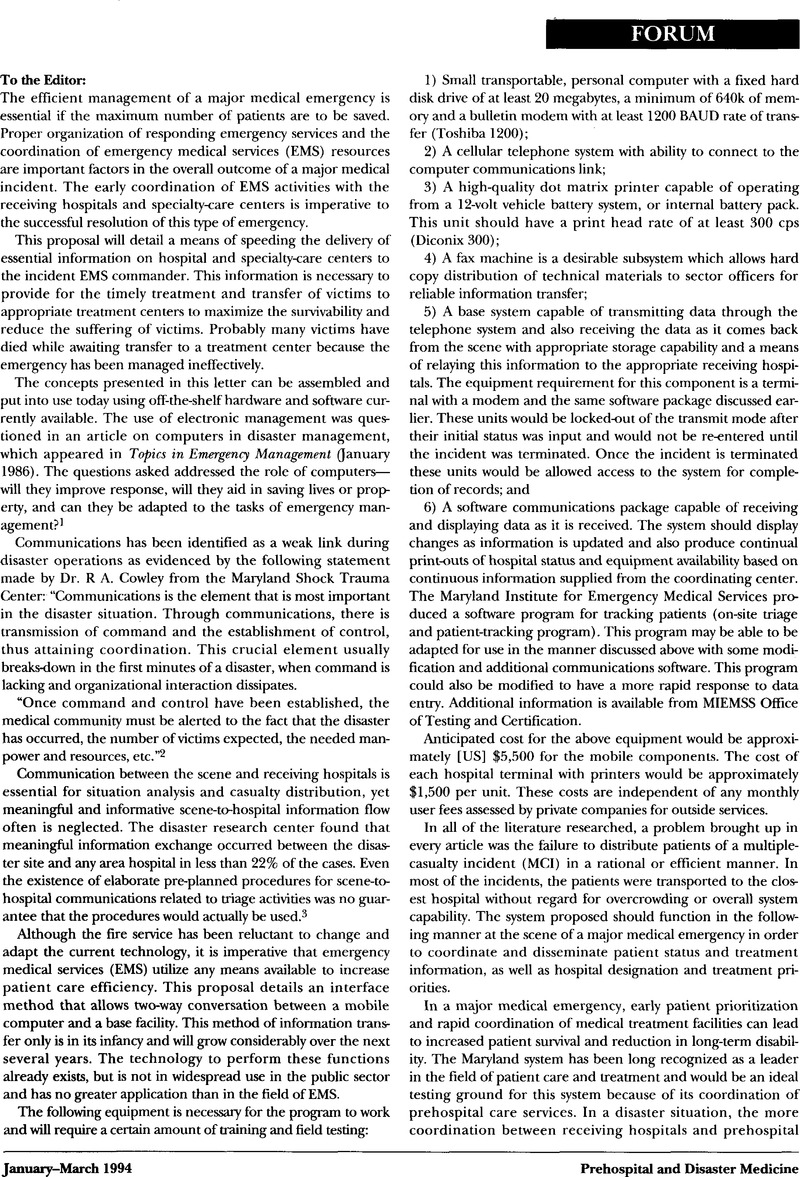No CrossRef data available.
Article contents
To the Editor
Published online by Cambridge University Press: 28 June 2012
Abstract
An abstract is not available for this content so a preview has been provided. As you have access to this content, a full PDF is available via the ‘Save PDF’ action button.

- Type
- Forum
- Information
- Copyright
- Copyright © World Association for Disaster and Emergency Medicine 1994
References
References
1. Bern, AI: Computers in disaster management. Topics in Emergency Management (1–86), Aspen Systems Corp.Google Scholar
2. Cowley, AR: Mass casualties: A lesson learned approach. Proceedings First International Assembly on Emergency Medical Services, 13–17 June 1982.Google Scholar
3. Hirde, E: Disaster Response, Principles of Preparation and Coordination. C.V. Mosby Company, New York 1989.Google Scholar
Bibliography
Harrison, D: Multi Casualty Incident Operational Procedures, (California Fire Chiefs Association), Los Angeles County Chapter.Google Scholar
Manni, C, Magalini, SI: Emergency and Disaster Medicine, (Proceedings of the Third World Congress, Rome Italy May 24–27, 1983) Springer-Verlag, New York.Google Scholar
Patrick, J, Moore, W: Mass Casualty Incident; “Five Essential EMS Roles,” (National Fire Academy, Management of Emergency Medical Services, 6–17 July 1987).Google Scholar
Maryland Institute for Emergency Medical Services Systems: Onsite Triage Patient Tracking Program. Baltimore: MIEMSS, 1989).Google Scholar




